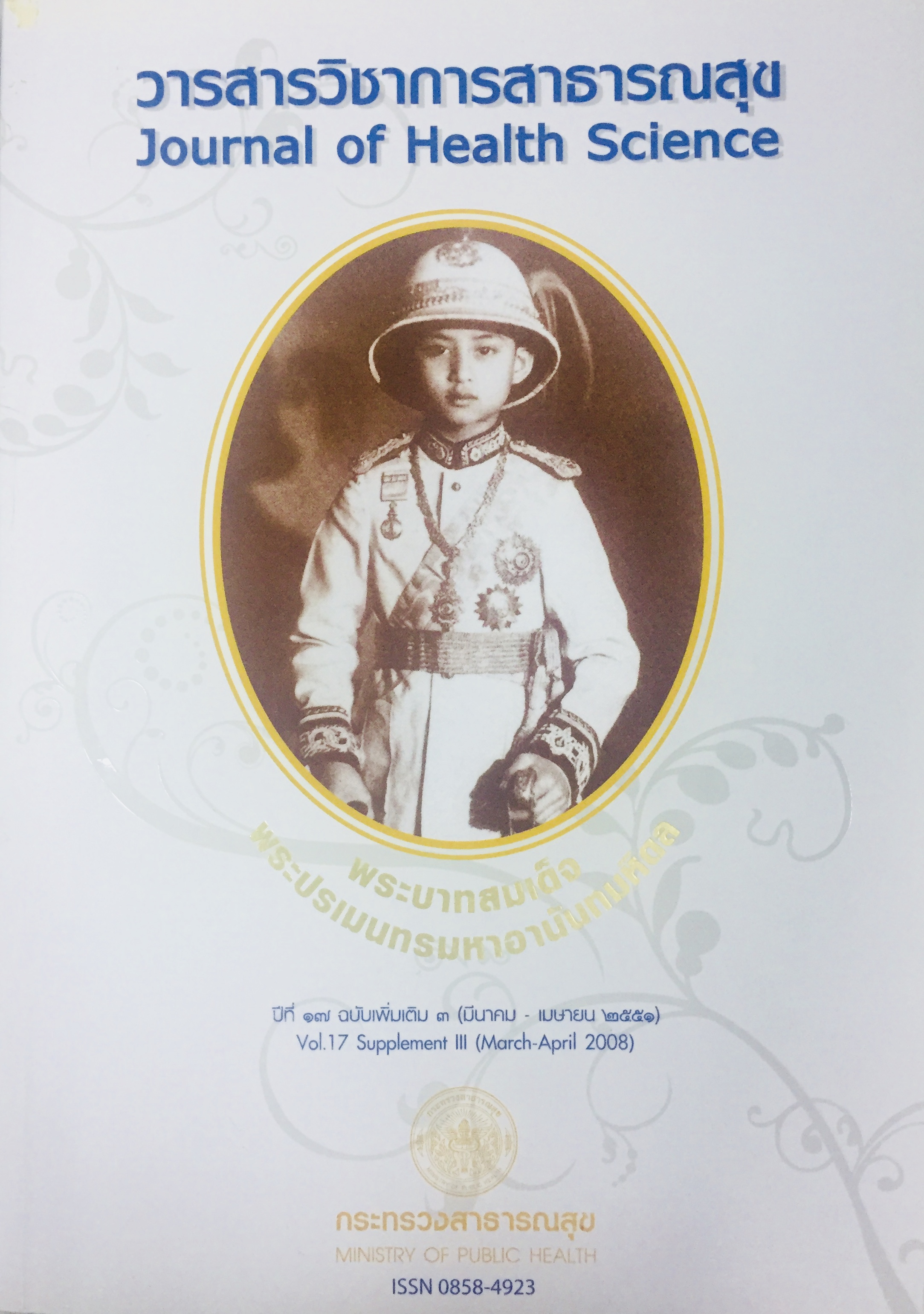การรักษาผู้ได้รับสารพาราควอทด้วยรางจืด
คำสำคัญ:
พาราควอท, รางจืด, ฆ่าตัวตายบทคัดย่อ
พาราควอทเป็นสารกำจัดวัชพืชที่นิยมใช้แพร่หลายมีความปลอดภัยถ้าใช้อย่างถูกวิธี การเกิด พิษจากพาราควอทมักเกิดจากการกิน เพื่อการฆ่าตัวตาย มีอัตราตายสูงตั้งแต่ร้อยละ 60-100 มีความพยายามลด อัตราตายด้วยวิธีการต่างๆ แต่ผลการรักษาก็ยังไม่มีข้อสรุปที่แน่นอนและยังไม่เป็นที่น่าพอใจ ในการศึกษานี้มีผู้ป่วย 57 ราย ที่มีภาวะเป็นพิษจากพาราควอท ได้รับการรักษาด้วยสาร fuller's earth, ascorbic acid, corticosteroid, การเร่งการขับปัสสาวะ และน้ำต้มรางจืด อัตราตายโดยรวมร้อยละ 47.4 ปริมาณสารพาราควอทที่กินในกลุ่มผู้ป่วยที่เสียชีวิตสูงกว่ากลุ่มที่รอดชีวิต (92.4, SD 13.3 มล. และ 17.4, SD 15.4มล. p = 0.007). ไม่มีความแตกต่างในระยะเวลาก่อนการรักษาในกลุ่มผู้ป่วยที่รอดชีวิตและเสียชีวิต (82.5 , SD 57.1 นาที. และ 67.7, SD 75.7 นาที, p = 0.43). ดรรชนีบ่งชี้ที่ทำนายการเสียชีวิตของผู้ป่วย ได้แก่ปริมาณสารพาราควอทที่กิน การมีเม็ดเลือดขาวสูง ตับอักเสบ ไตวายเฉียบพลัน ภาวะหายใจล้มเหลว การตรวจพบโปรตีนและสารพาราควอทในปัสสาวะ จากการวิเคราะห์กลุ่มย่อย พบว่ามีผู้ป่วย 24 ราย มีภาวะเป็นพิษจากพาราควอทอยู่ในระดับปานกลางถึงรุนแรง เมื่อเปรียบเทียบกับผู้ป่วยในกลุ่มควบคุมที่อยู่ในระดับความรุนแรงเดียวกัน พบว่าอัตราตาย ในการศึกษานี้มีน้อยกว่า (37.5% และ 57.1%). ดังนั้น จะเห็นได้ว่า การใช้น้ำต้มรางจืดอาจเป็นประโยชน์ในการรักษาภาวะเป็นพิษจากสารพาราควอทและอาจช่วยลดอัตราตายได้โดยเฉพาะอย่างยิ่งในกลุ่มที่มีพิษปานกลางถึงรุนแรง
Downloads
ดาวน์โหลด
เผยแพร่แล้ว
วิธีการอ้างอิง
ฉบับ
บท
การอนุญาต
ลิขสิทธิ์ (c) 2018 วารสารวิชาการสาธารณสุข

This work is licensed under a Creative Commons Attribution-NonCommercial-NoDerivatives 4.0 International License.







